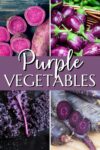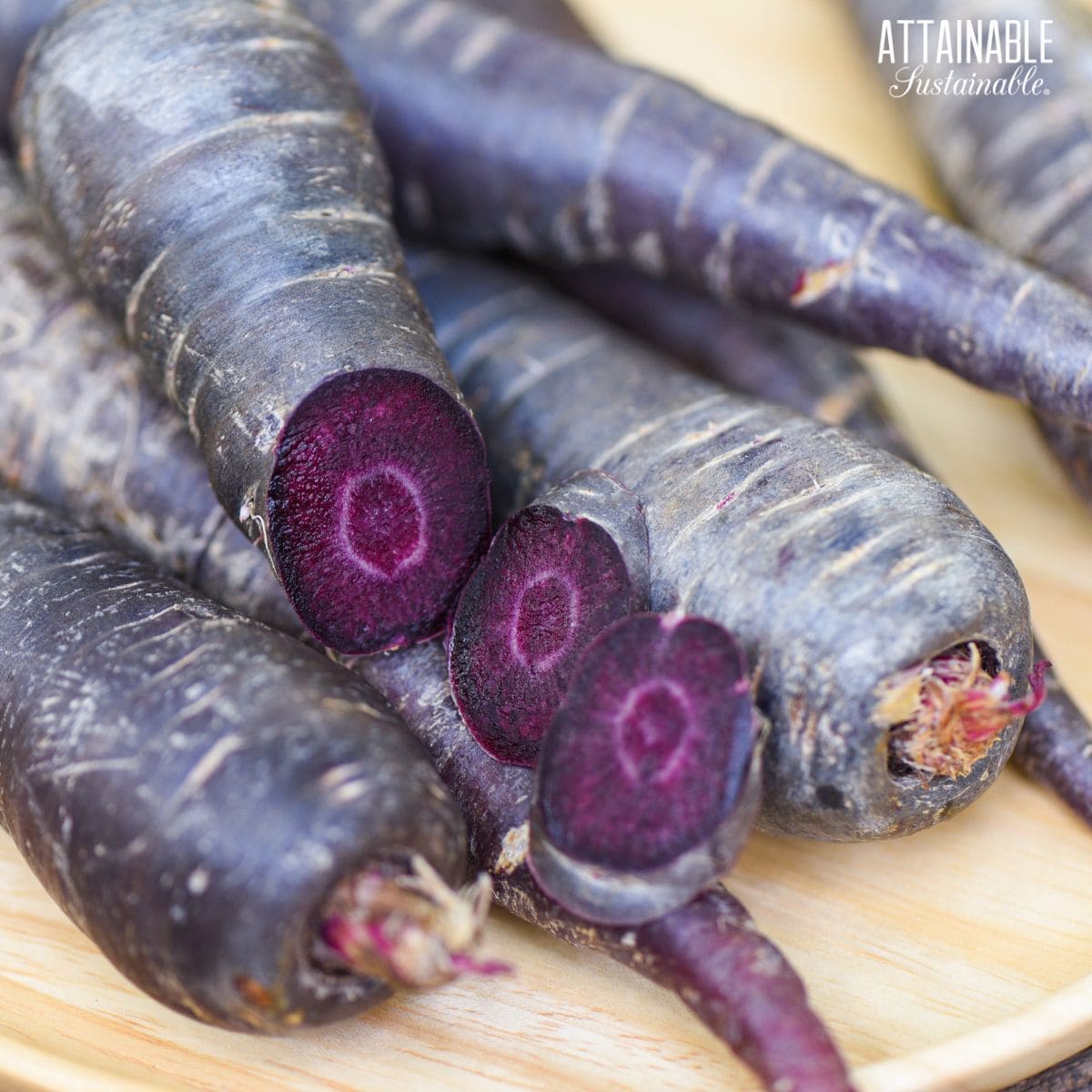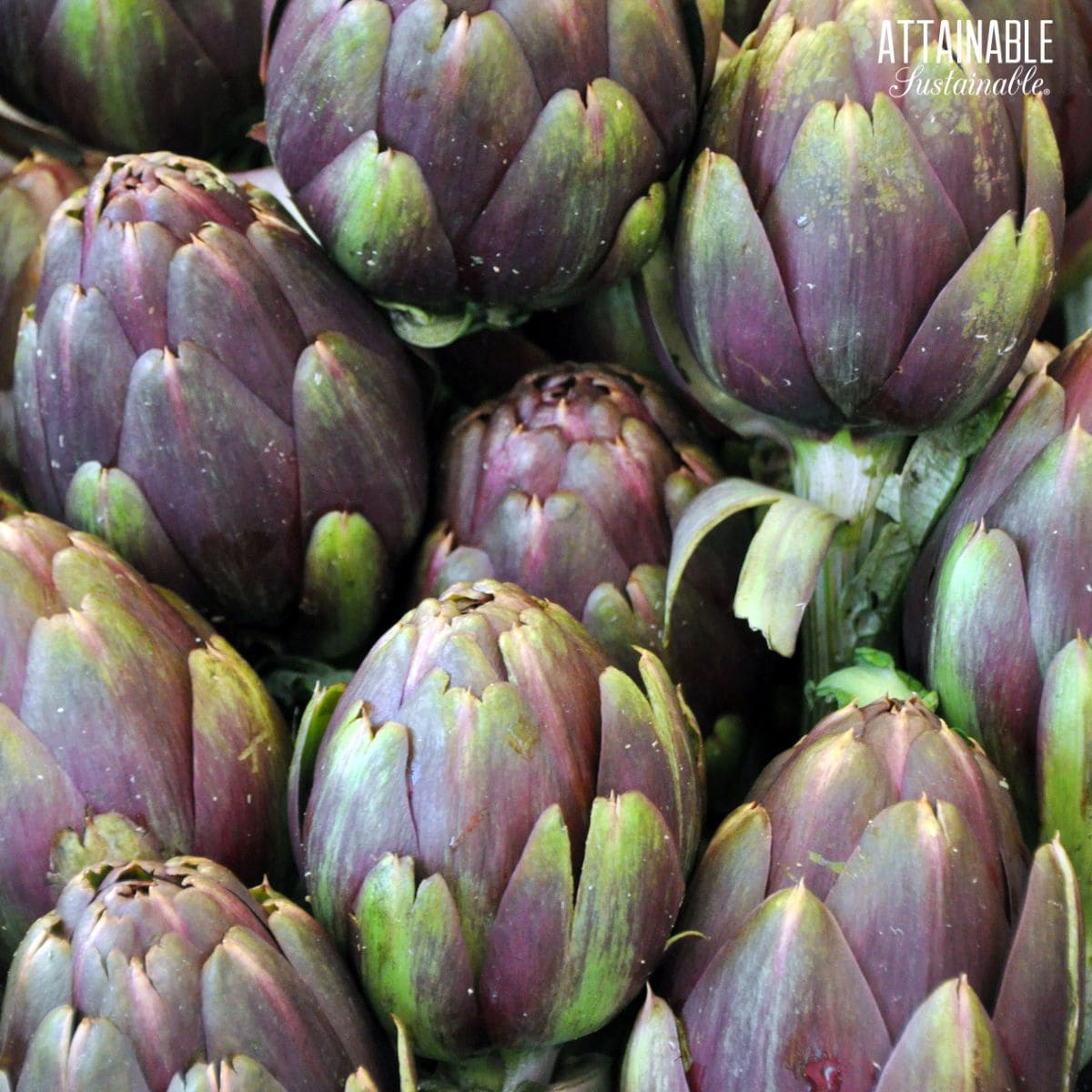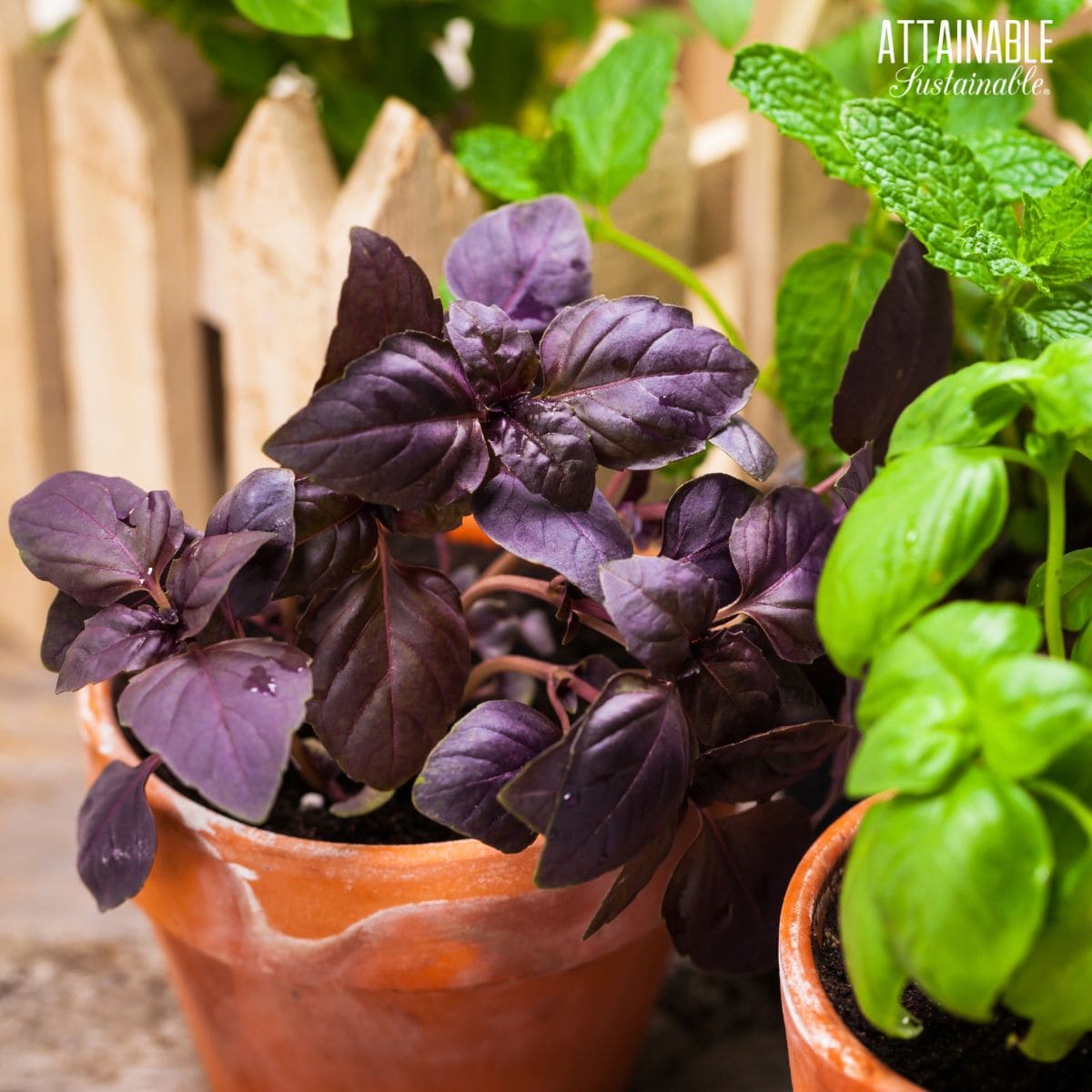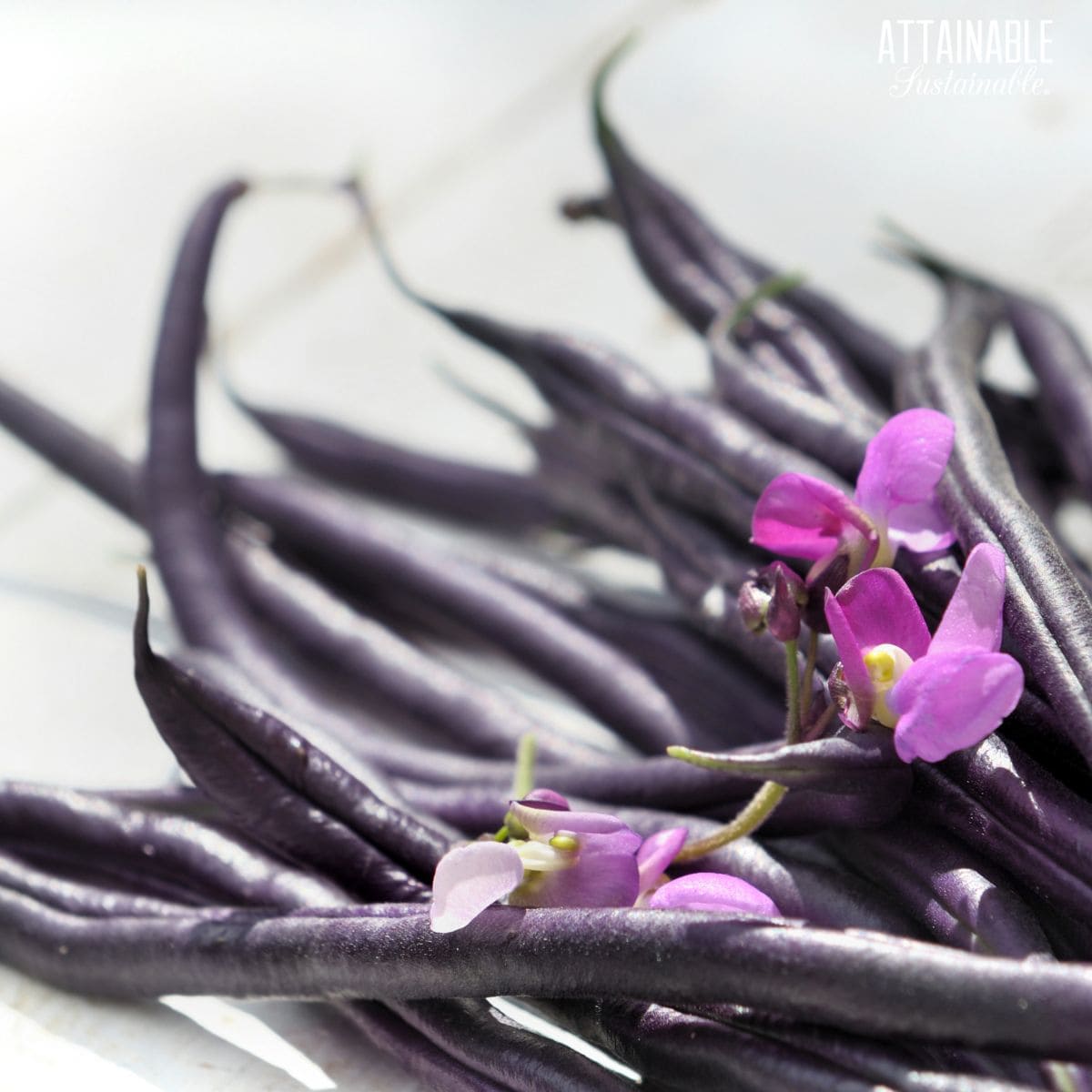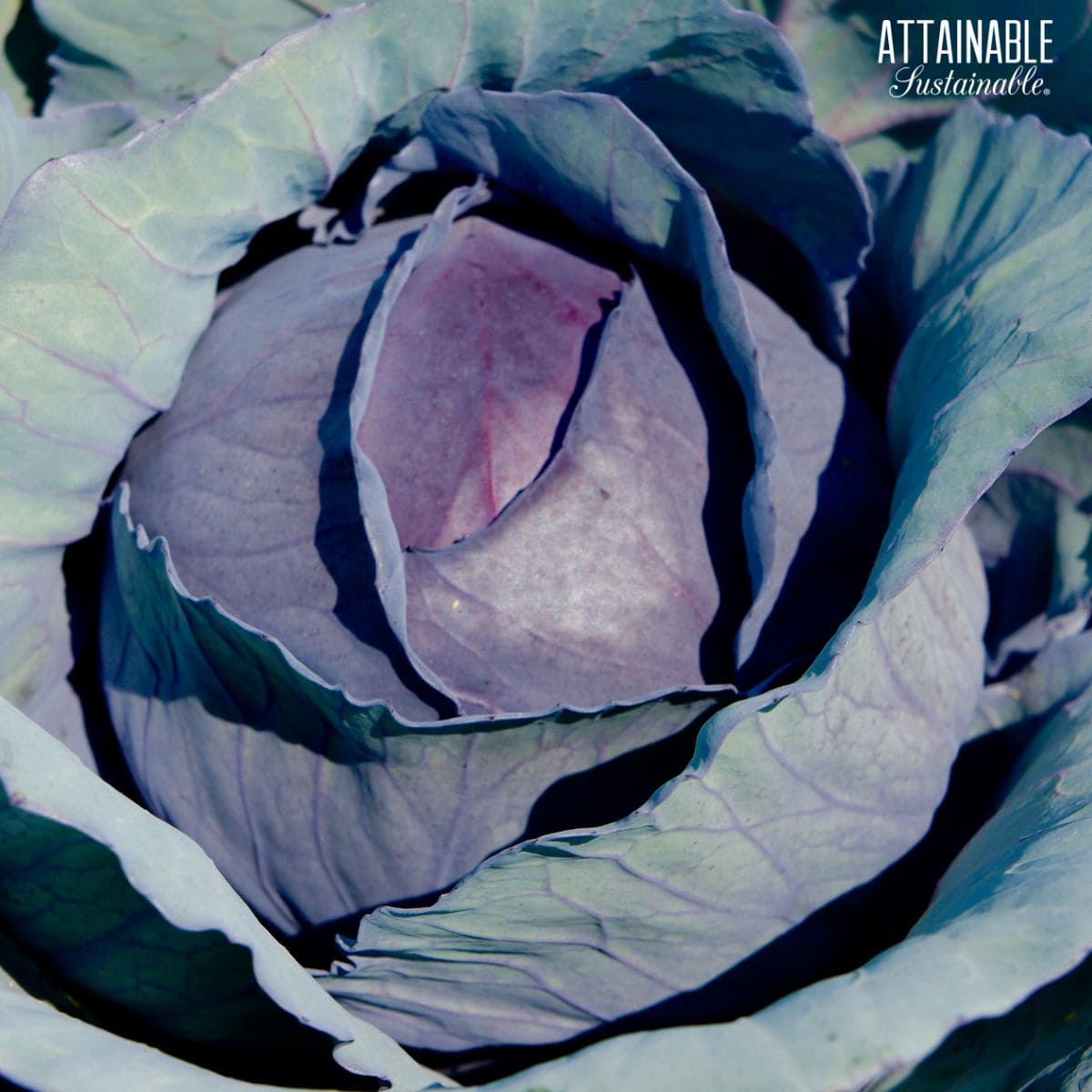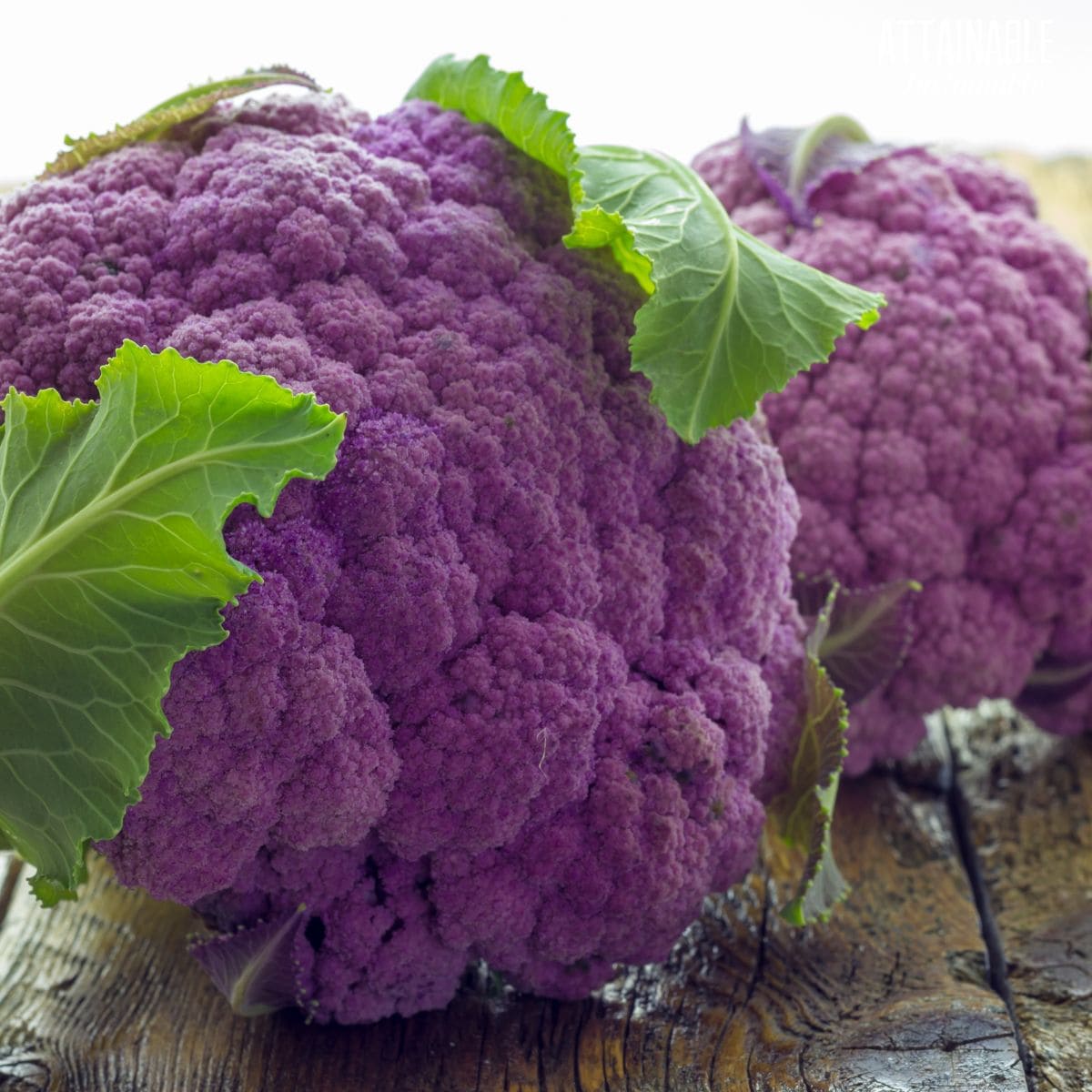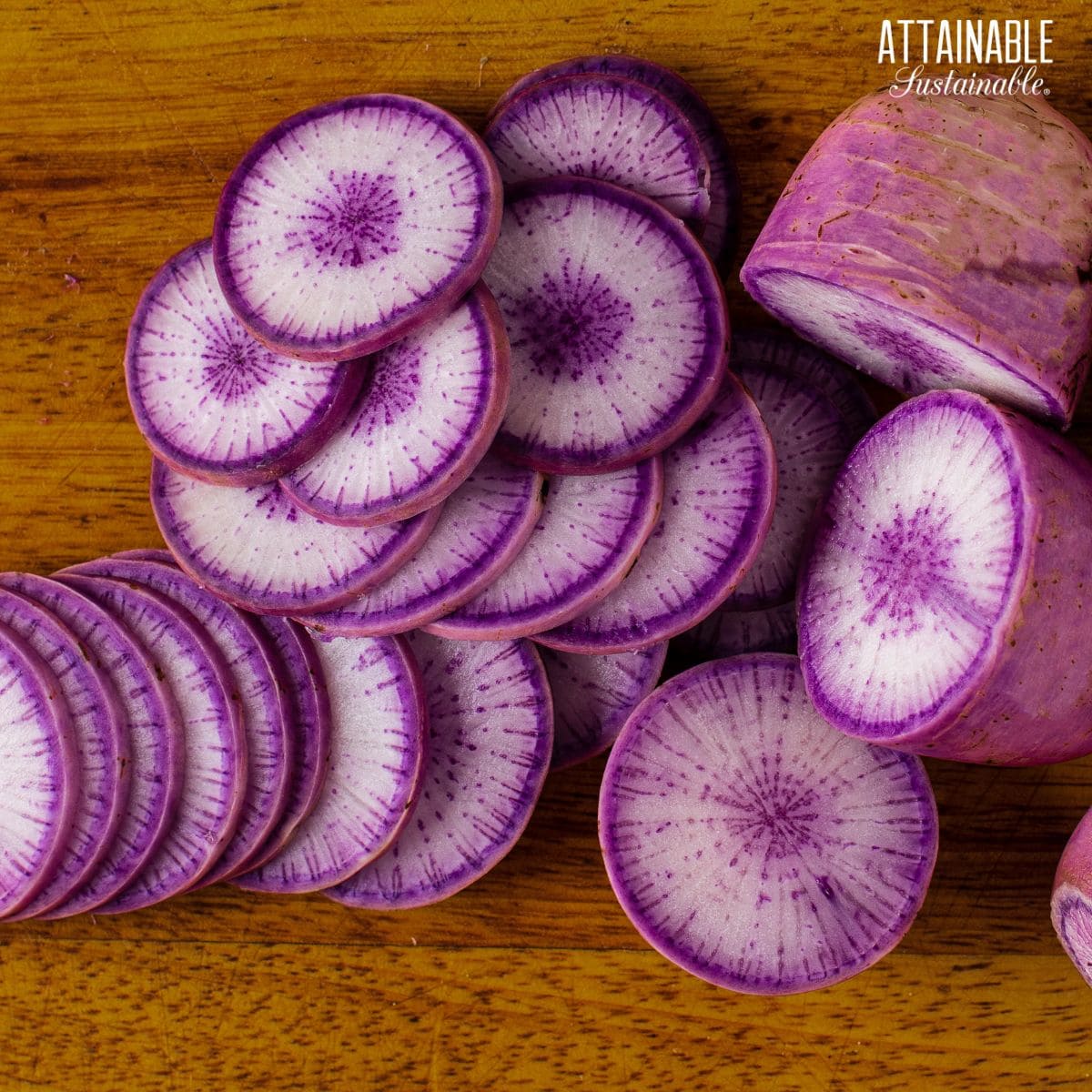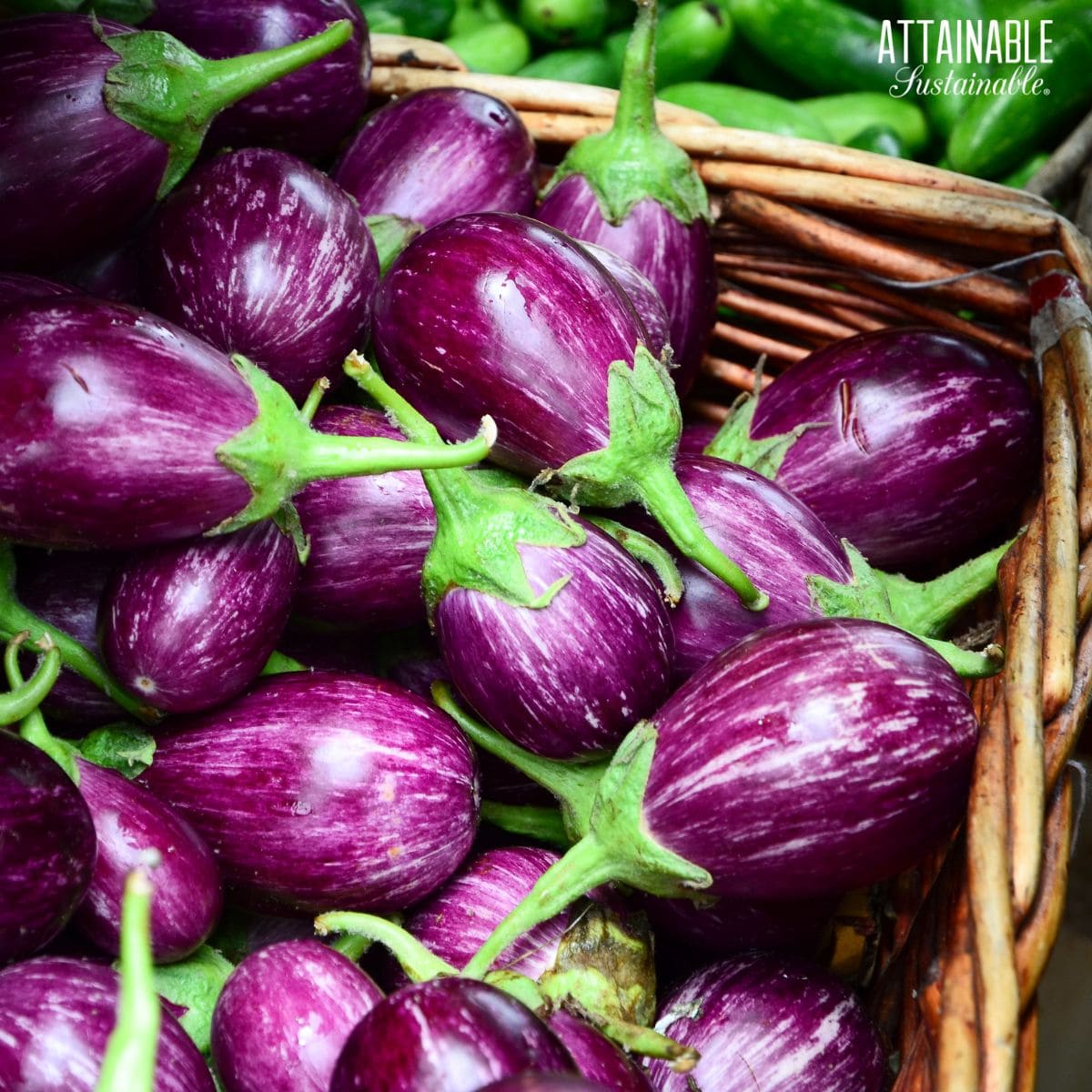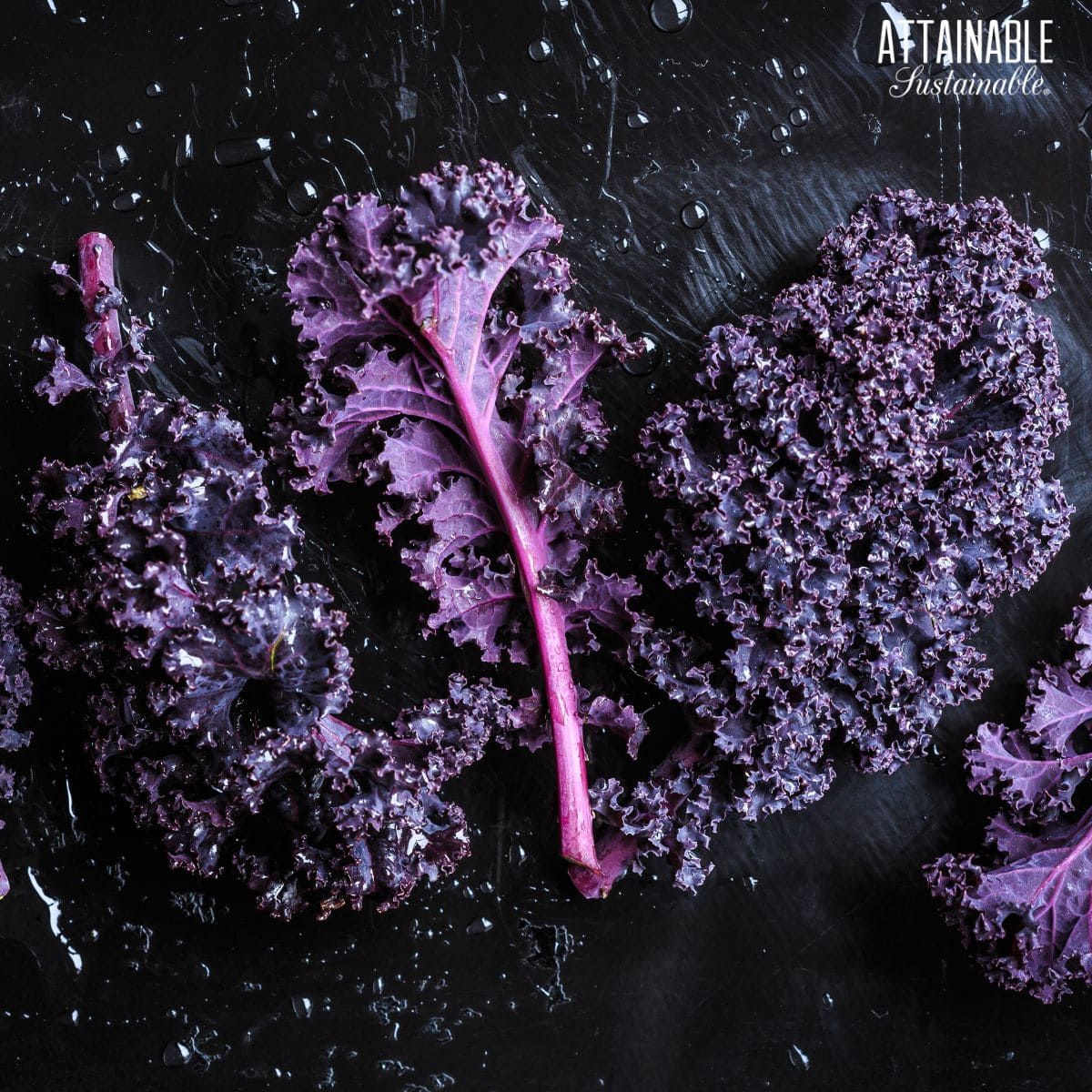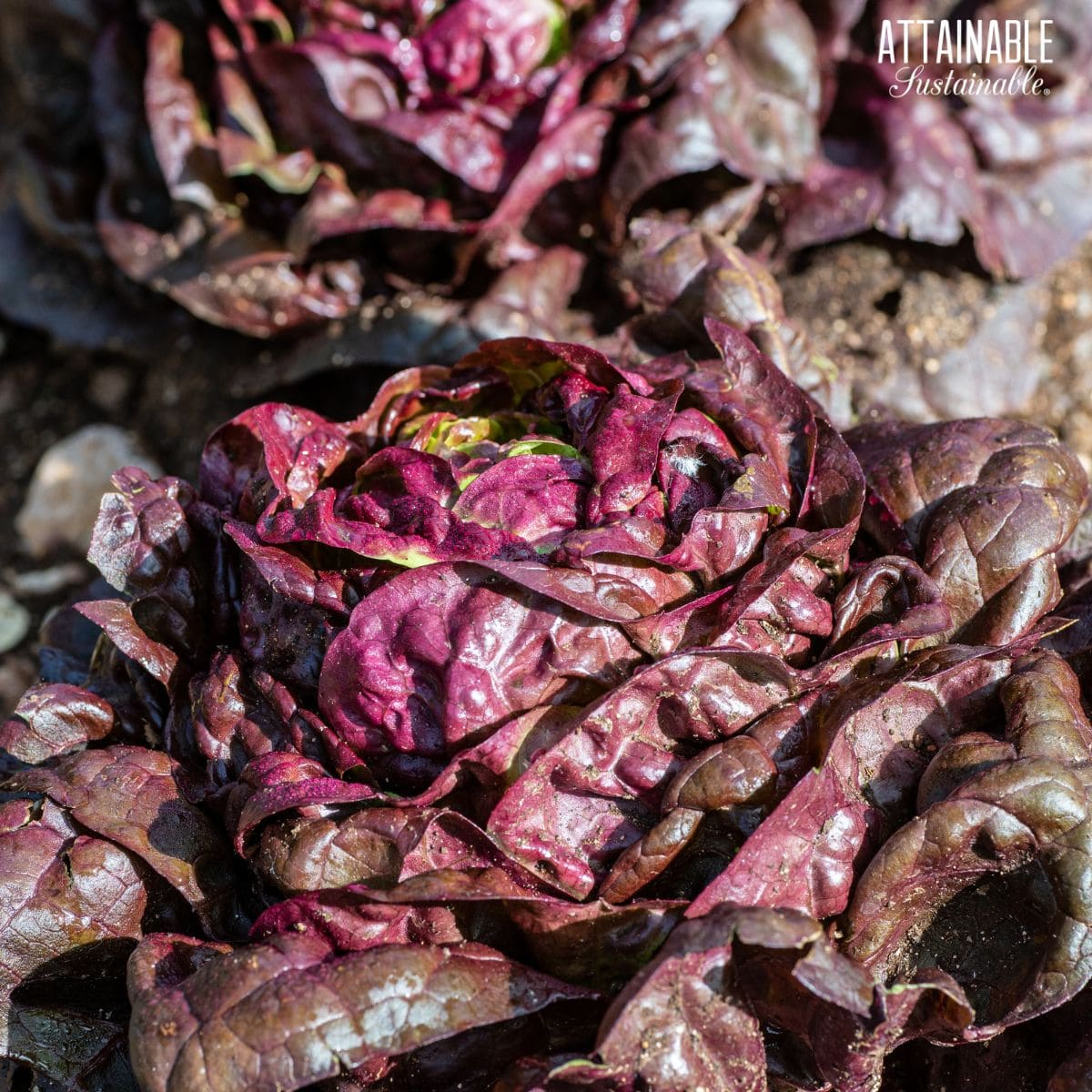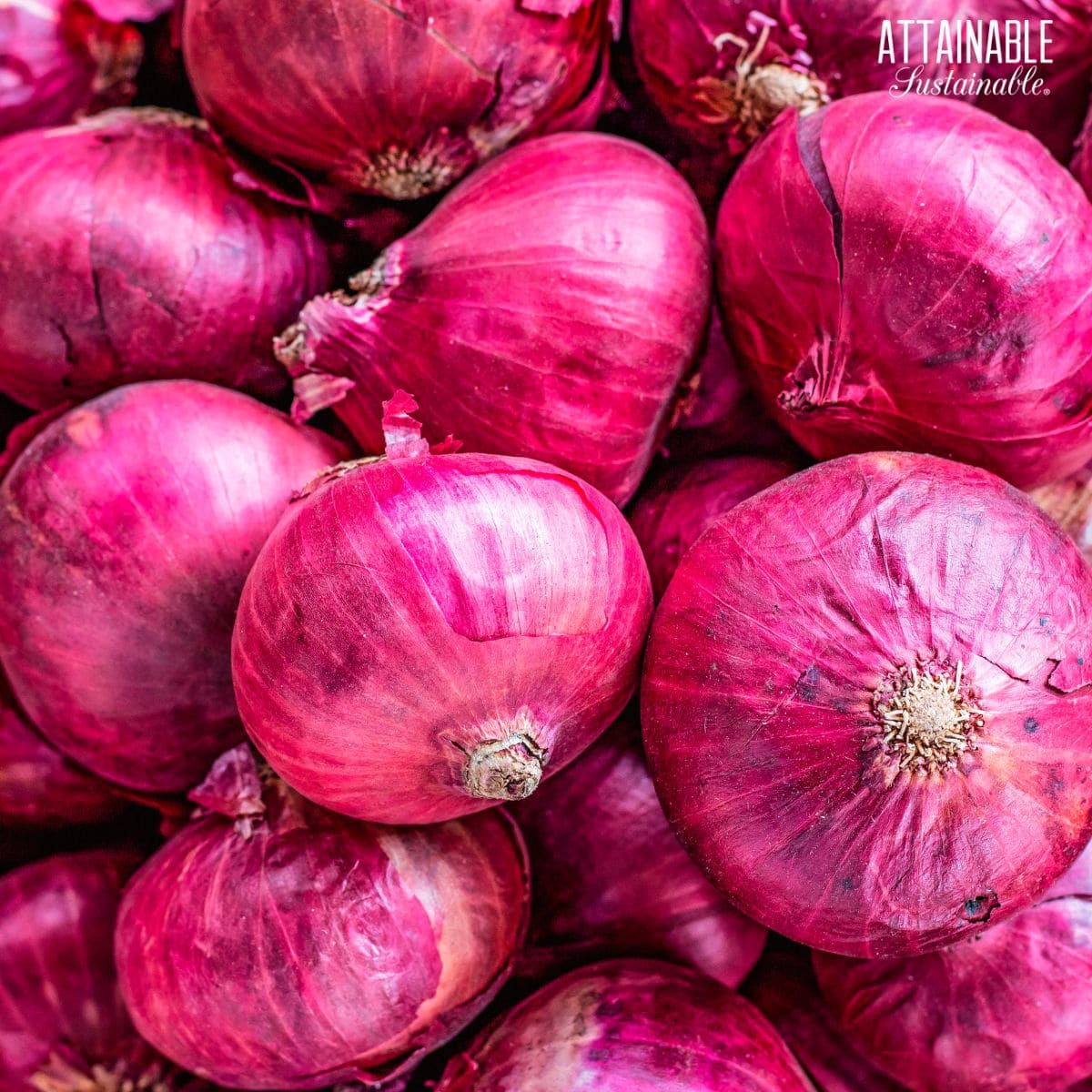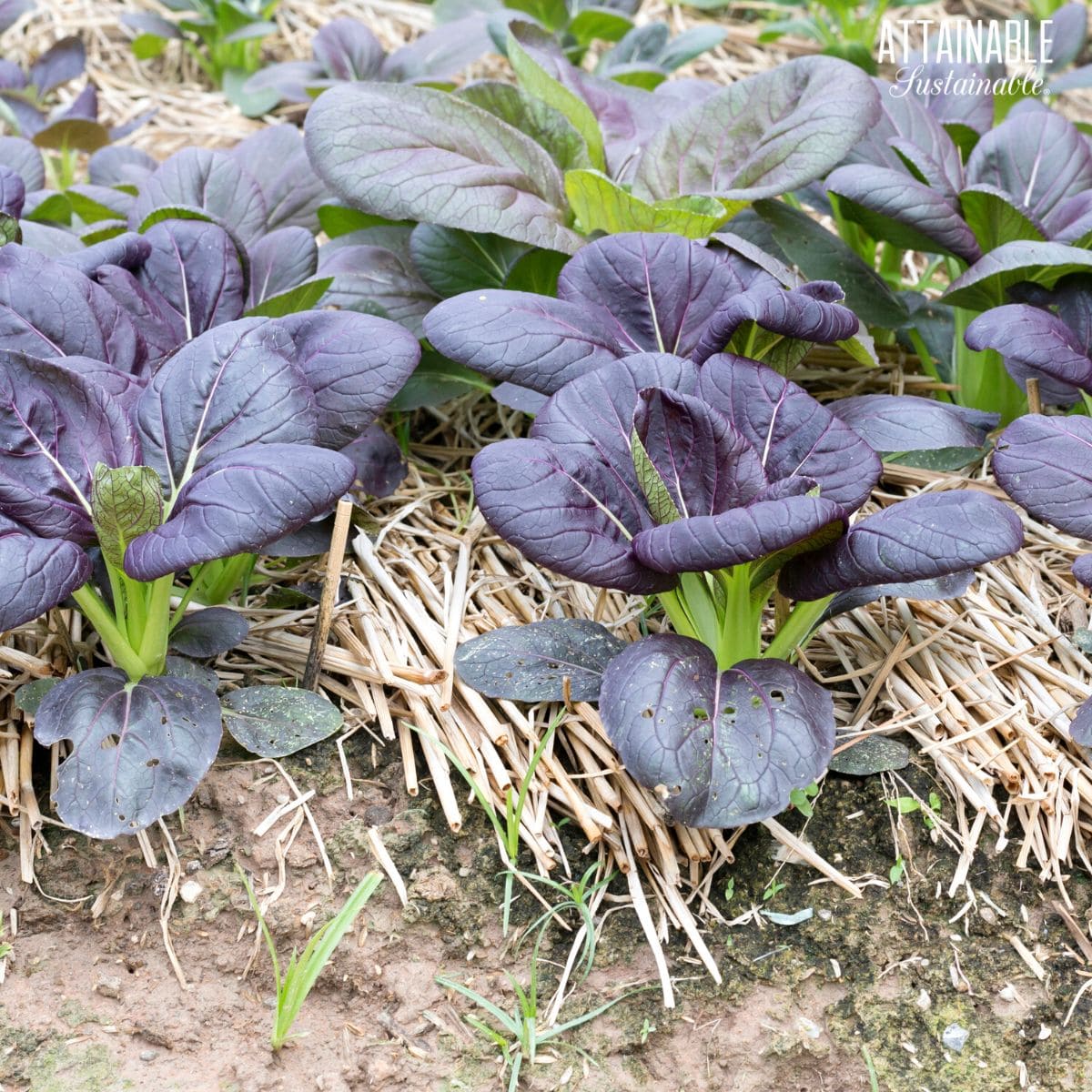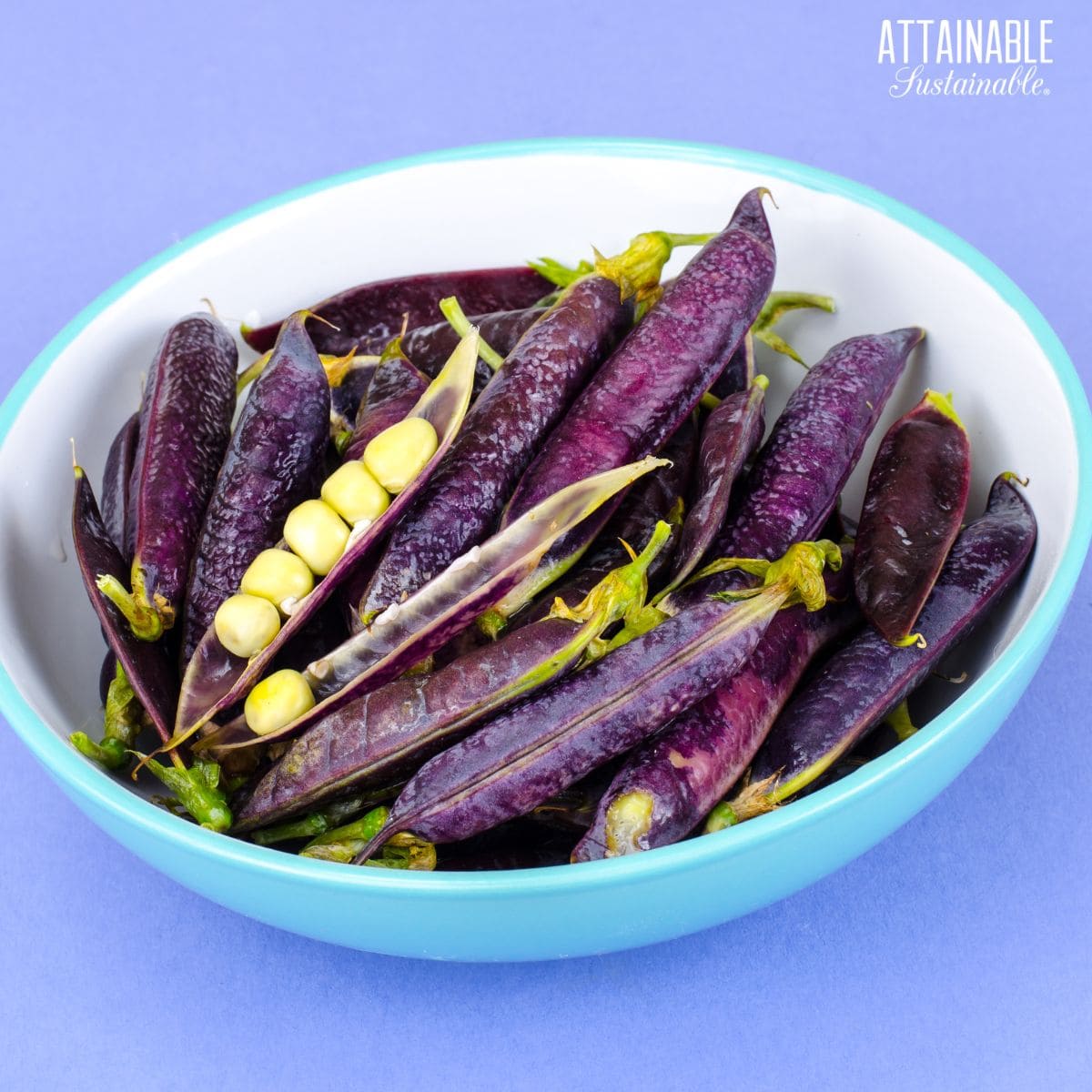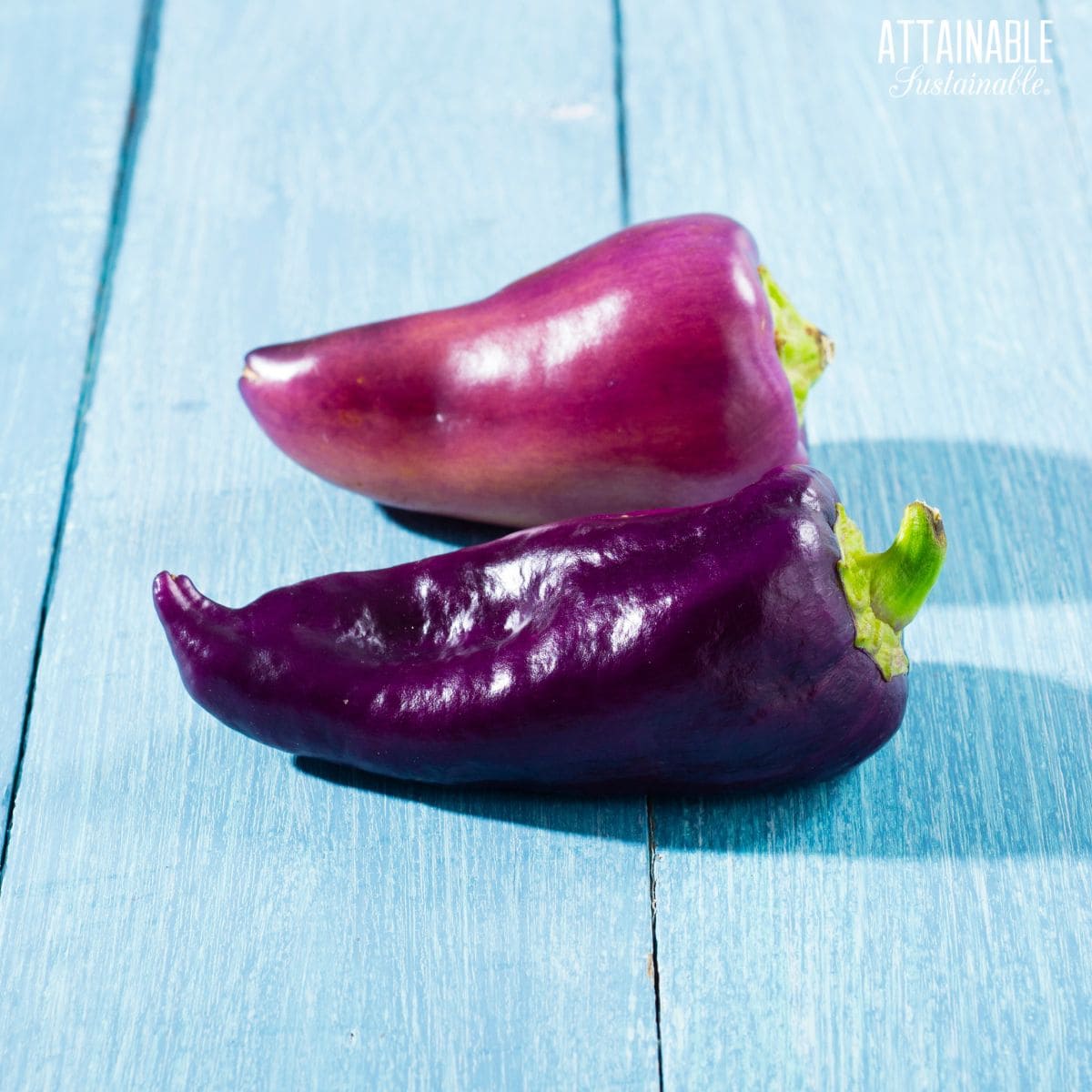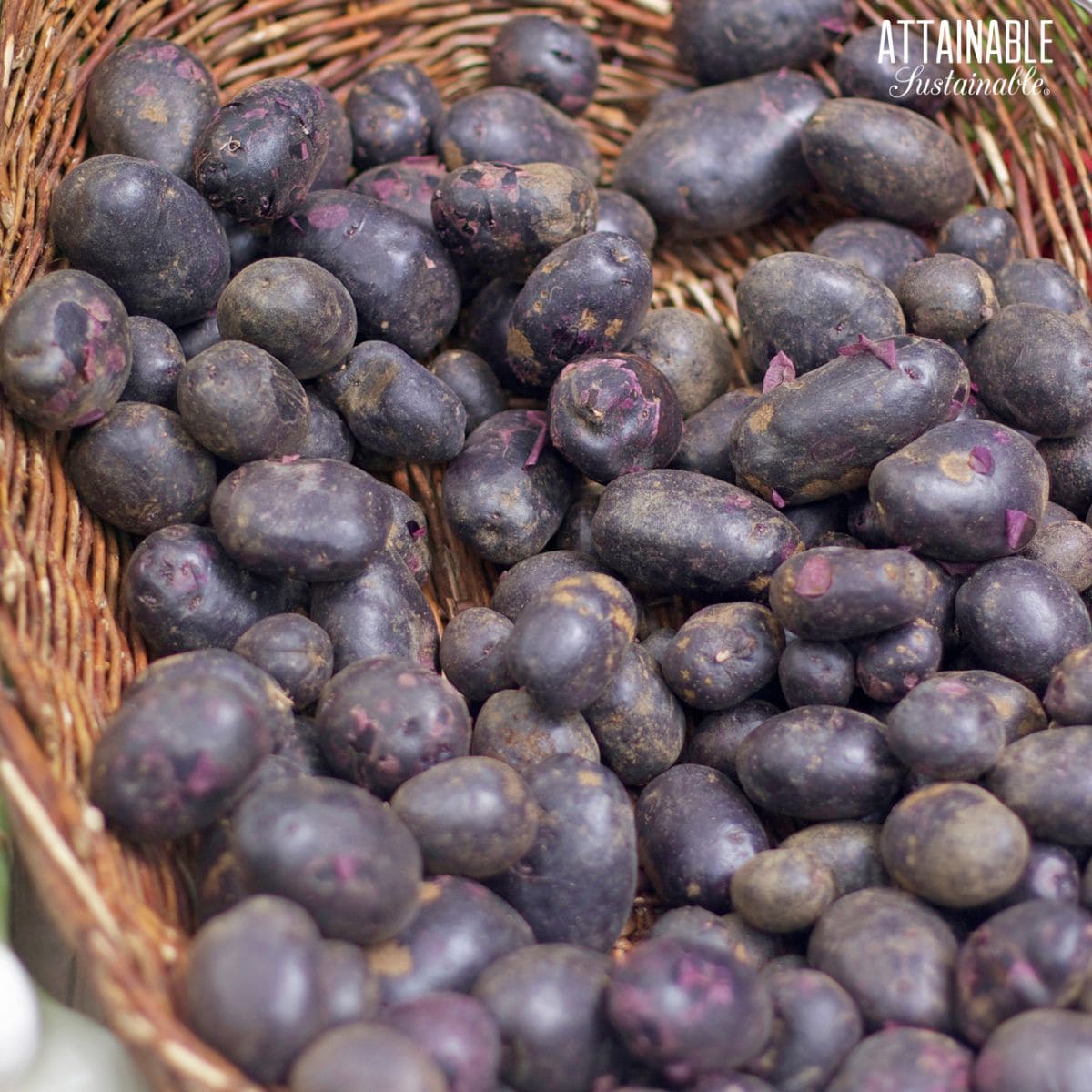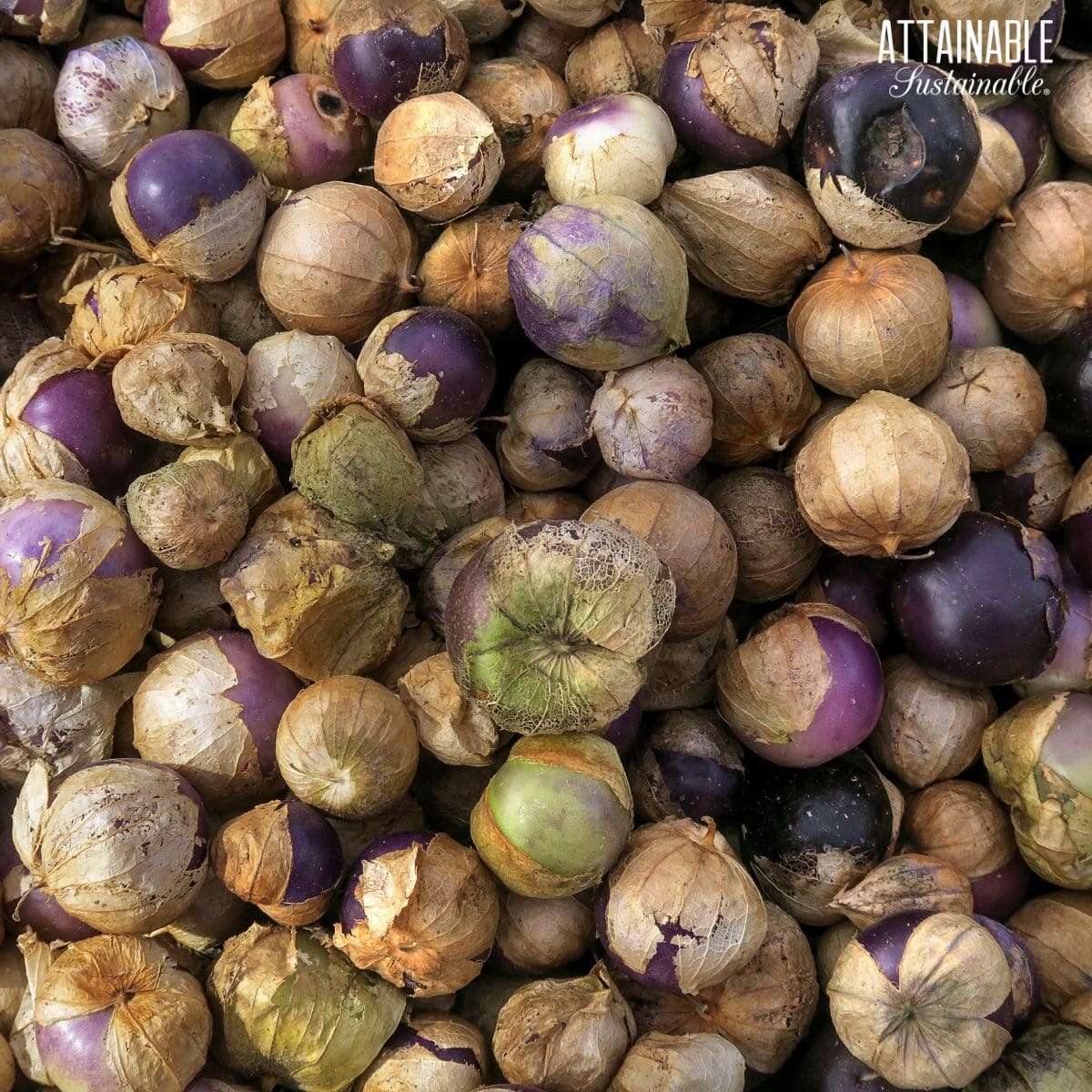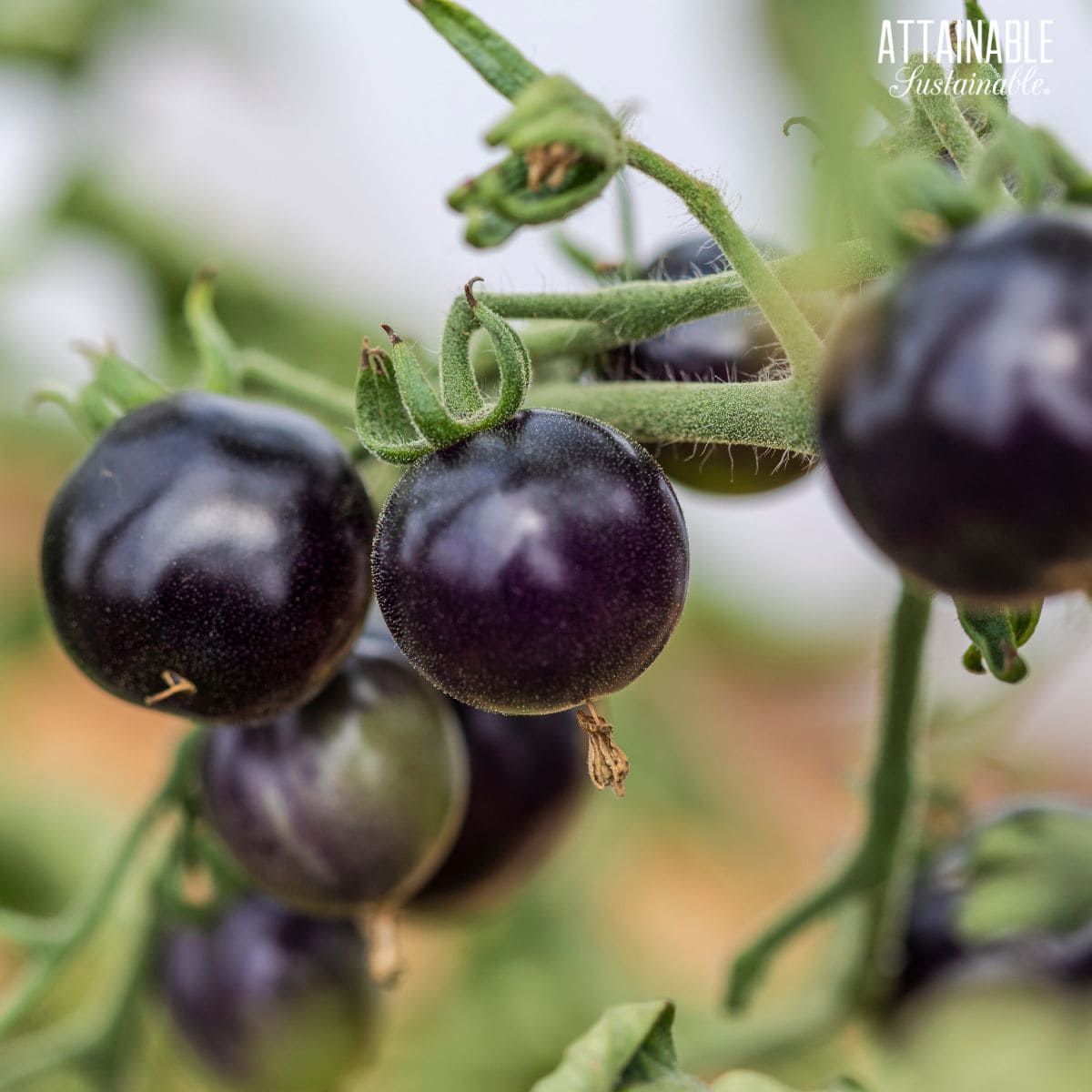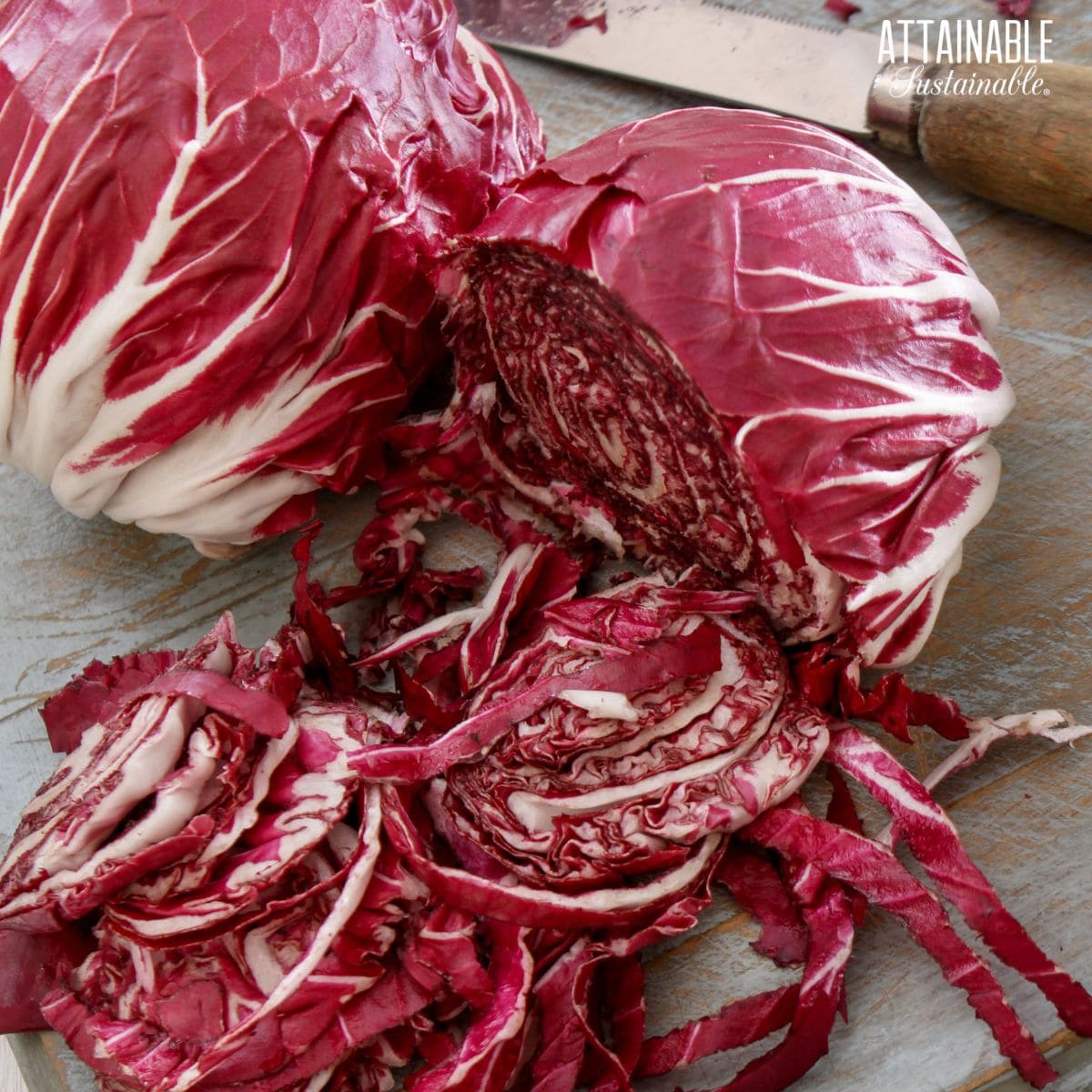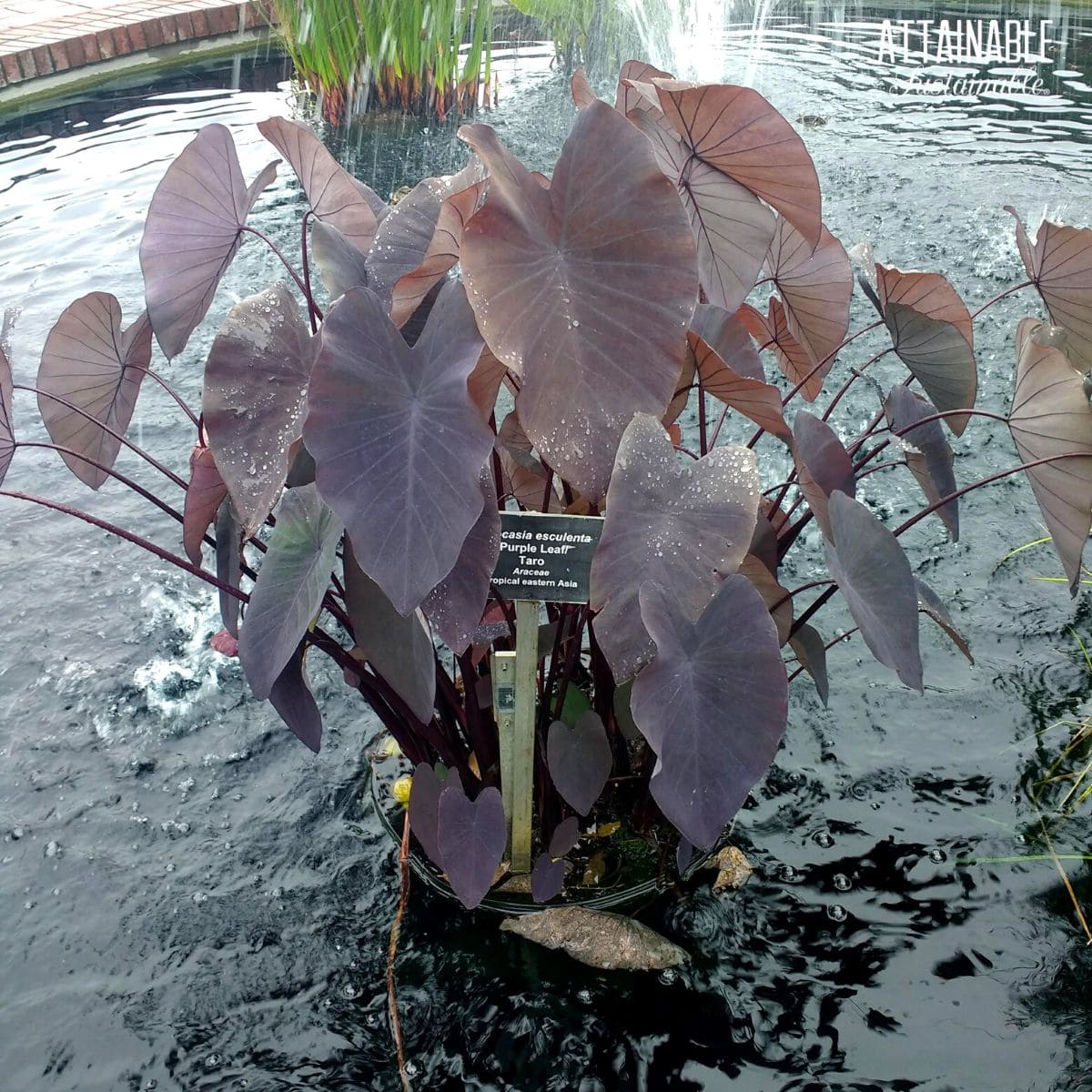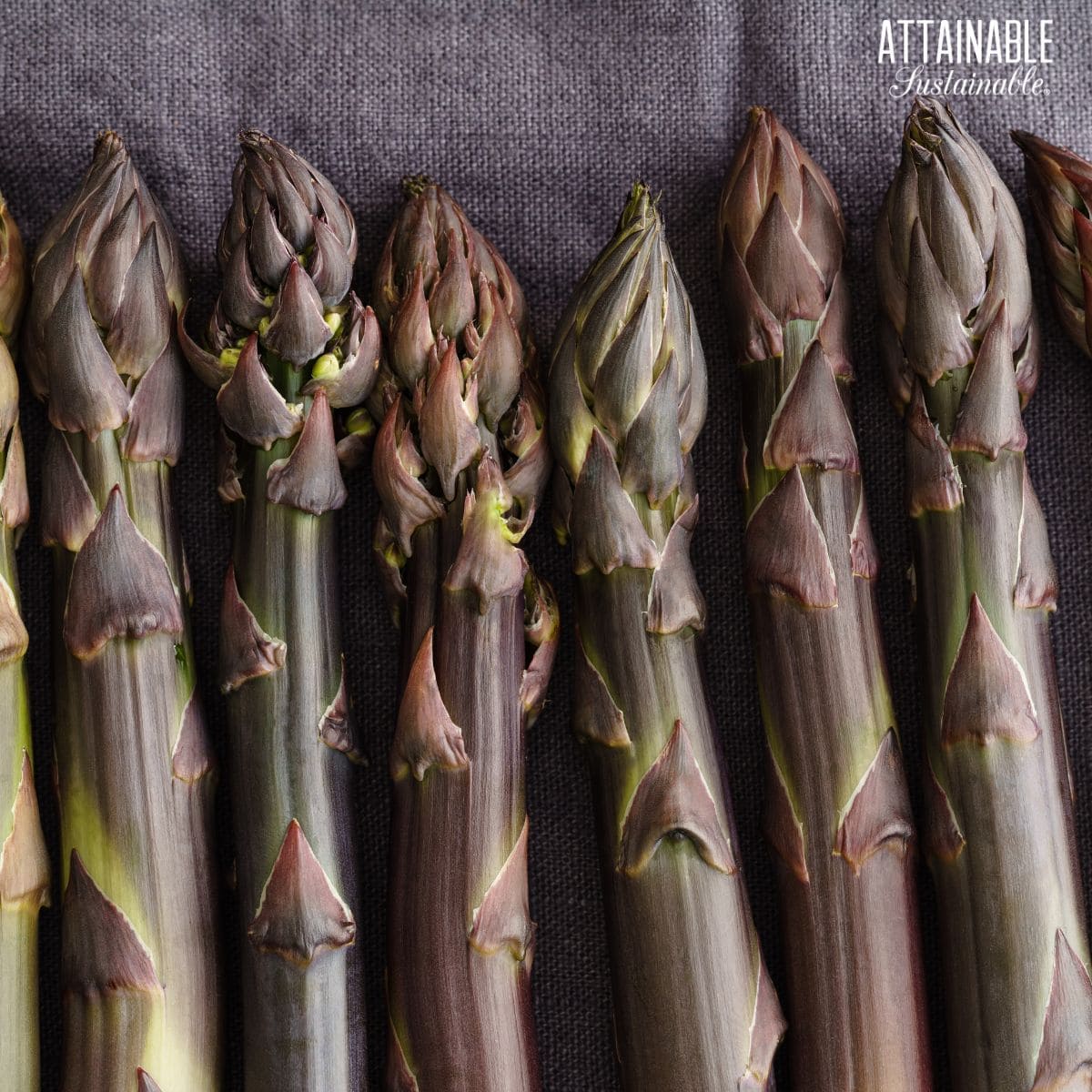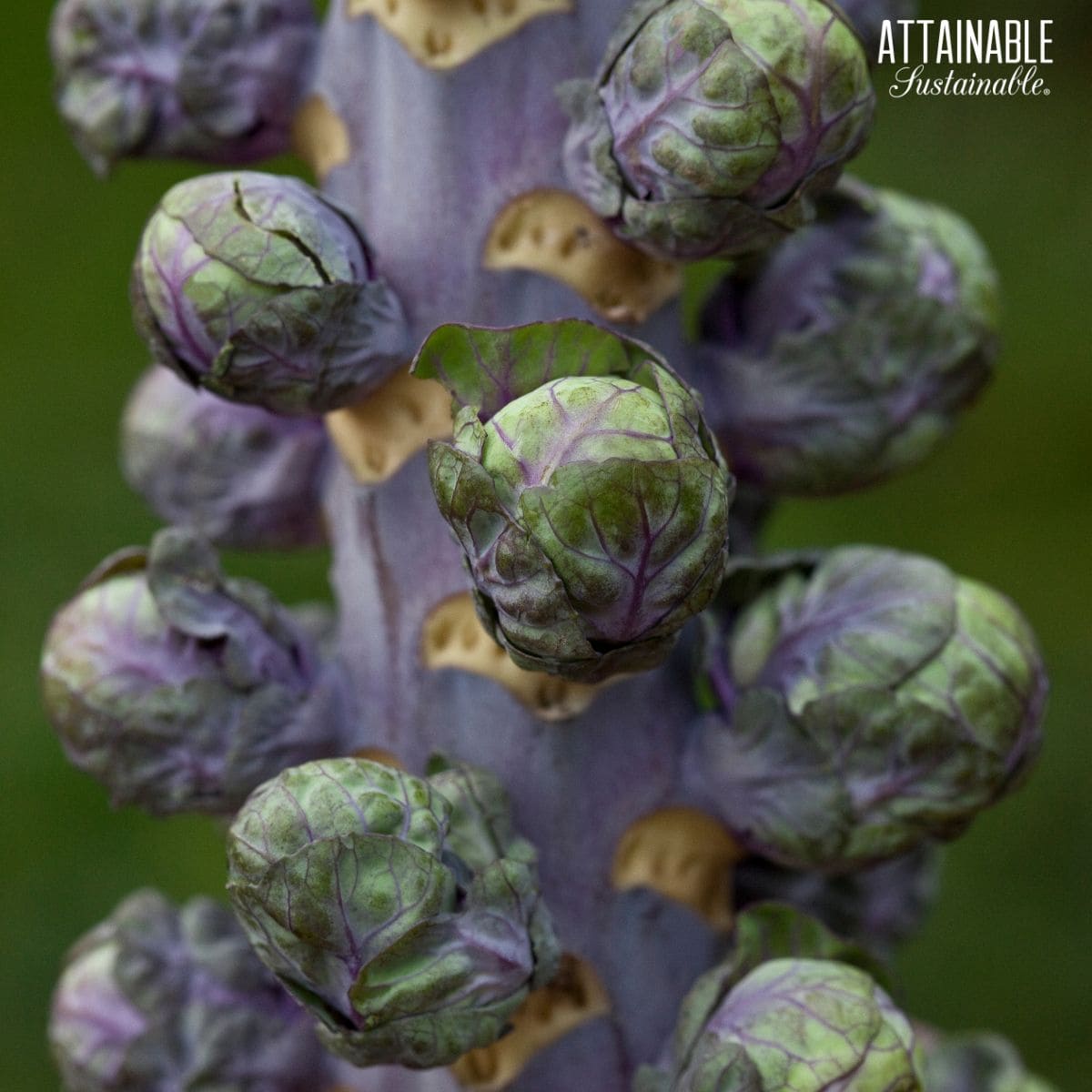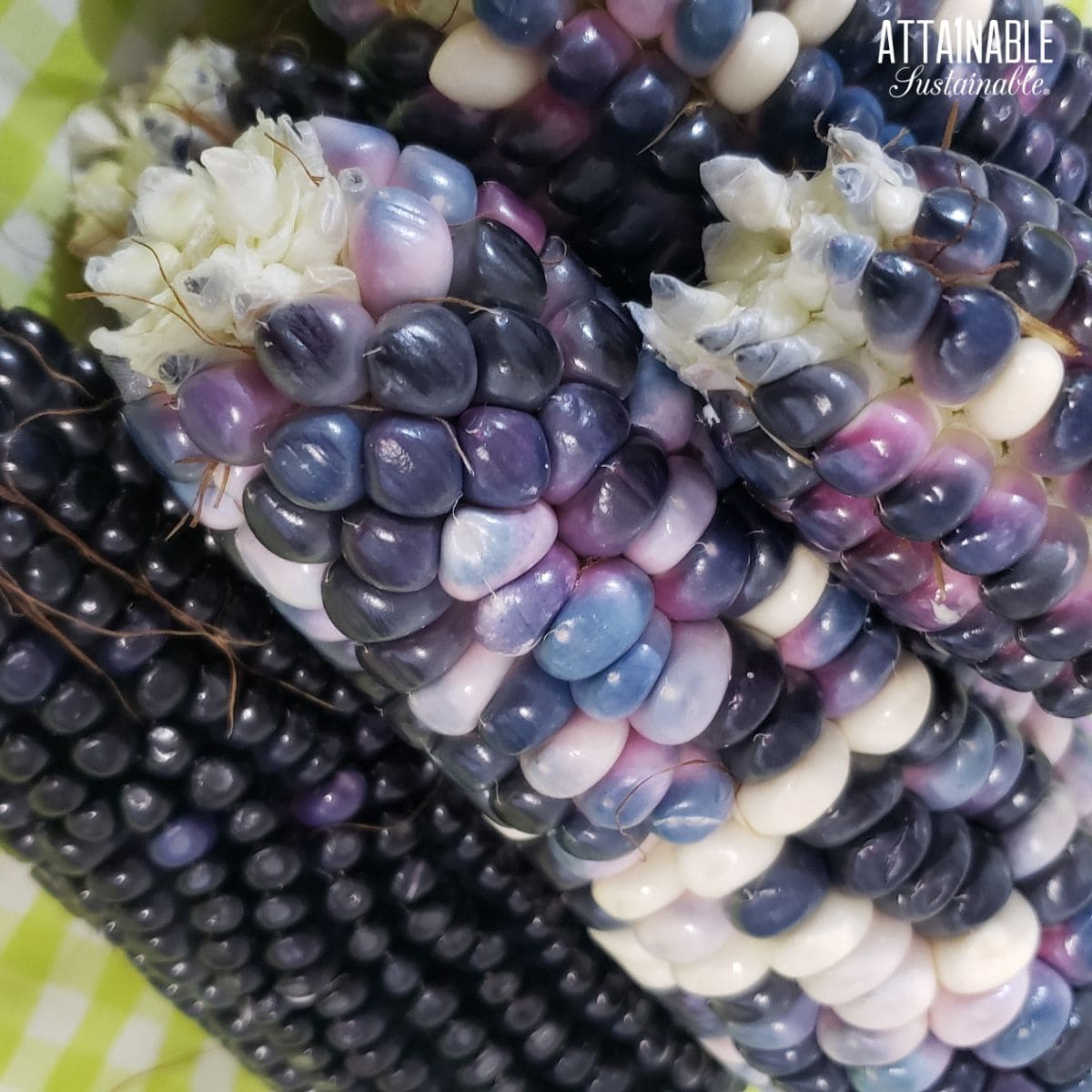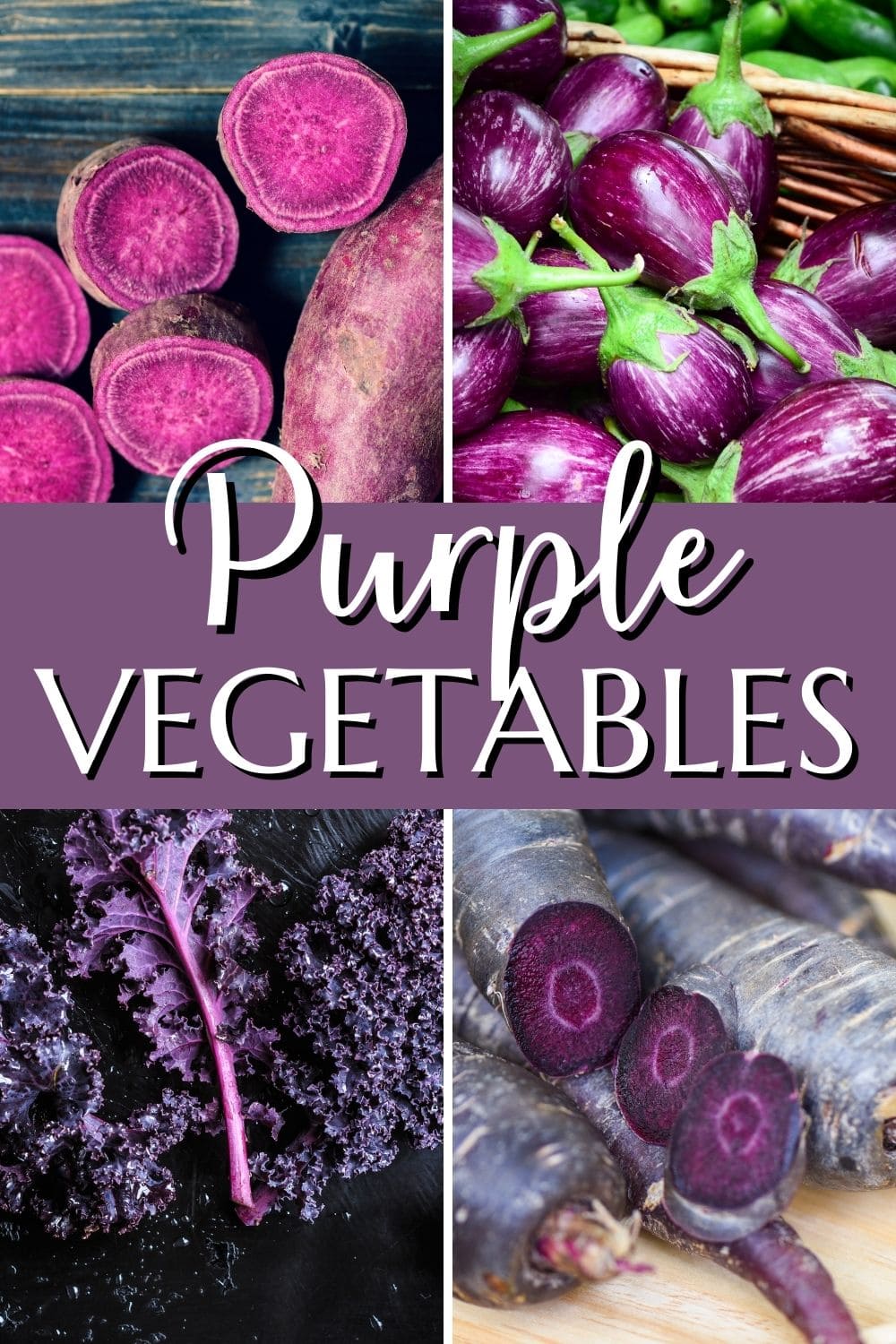Planting a garden is good fun no matter what you grow, but you can really add some color to your meals if you plant a collection of purple vegetables! Your local farmers market is another option — oftentimes, growers offer an assortment of unusual veggies for their customers to try.
Be sure to check out this guide to when vegetables are in season.
Besides the sheer beauty of these vibrant veggies, there are some surprising health benefits to adding purple foods to your diet. (Well, naturally purple foods. Grape popsicles, not so much!)
Enjoy Purple Vegetables for Your Health
Natural plant pigments called anthocyanins give these vegetables their purple color. And those anthocyanins may improve brain health, lower inflammation, and fight disease. The National Library of Medicine says:
Scientific studies, such as cell culture studies, animal models, and human clinical trials, show that anthocyanidins and anthocyanins possess antioxidative and antimicrobial activities, improve visual and neurological health, and protect against various non-communicable diseases.
So many great reasons to add purple vegetables to the menu! And there are so many to choose from. In no particular order, I give you purple veggies galore!
Purple Carrots
Years ago I was helping in the kitchen for a music workshop my son was attending. One of the attendees saw me putting out a plate of purple carrots and was shocked when I told them what they were. He’d never seen anything but orange carrots. I think of Uncle Moses every time I eat a deep red or purple carrot.
Some of the purple carrots you’ll find are purple all the way through, while others show some orange.
Seeds
More on carrots:
- Learn more about growing carrots (along with a little trick from my grandpa).
- How to freeze carrots
- Fermented carrots
Beets
The only beets I ever had were canned, up until my adulthood. Now, fresh beets are one of my favorite veggies! This veggie is often called out as red, but I’m in the “this is more magenta than red” camp.
The deep color of beets doesn’t come from the aforementioned anthocyanins. The purple color in this richly colored root comes from betalain pigments, which are also healthy.
Seeds
More on beets:
- How to grow beets
- Making beet sauerkraut
- Using beet greens (yes, they’re edible!)
Purple Kohlrabi
I’ve only just discovered this delicious vegetable in the last decade or so. It’s a funny one, as the bulb grows just above the level of the soil. It’s not a root crop, but kohlrabi is root-like. It comes in two different colors, green and purple. Despite the pretty outer color, the inside of this crunchy veggie is plain white. I like to eat this one raw, but it can certainly be cooked as well.
Seeds
More on Kohlrabi
Purple Artichokes
Artichokes are a short-lived perennial plant that will produce for several seasons. Its pretty foliage makes it a good choice for front yard gardens. While you’ll mostly find green artichokes in the produce section of the supermarket, seek out purple artichoke varieties at the farmers market or add some to your garden.
Seeds
More on artichokes
Purple Basil
OK, so basil isn’t necessarily a vegetable, but it’s a must-have in my vegetable garden. The flowers draw bees and the leaves of this herb are so useful in the kitchen! Opting for purple basil adds color to the veggie garden and it’s beautiful in pots.
Seeds
More on basil
- How to grow basil
- How to propagate basil from cuttings
- How to save basil seed
- How to dry basil
- 25 Basil recipes to try
Purple Beans
Here is the great thing about growing purple beans: they are easy to see when harvesting them! While green beans can hide among the green leaves, the purple varieties stand out.
You’ll find a variety of beans in the purple hue; some are just like a regular green bean, and there are yard long beans as well.
The flavor of these beans is just what you’d expect from a fresh garden string bean. Sadly, the purple color doesn’t stick around when you cook the beans, though!
Seeds
More on string beans
- How to grow beans
- Dilly beans (refrigerator pickles)
- Pickled beans (canning recipe)
Purple Cabbage
The vivid color of purple cabbage (sometimes referred to as red cabbage, but hello, this is purple!) adds a nice pop of color to simple green salads. It’s also good for you! It has those anthocyanins I mentioned earlier. According to Harvard University:
Population-based studies have linked a higher intake of anthocyanins and other so-called phytochemicals to a lower risk of cardiovascular disease.
Seeds
More on cabbage
- Growing cabbage
- How to make sauerkraut (purple or green)
Amaranth
Amaranth is a plant that is grown for both its seeds and its leaves. While you may not have the wherewithal to process the seeds into an edible grain, it’s a great addition to your garden for the leaves alone. Those seed heads are attractive to birds, too.
Seeds
More on amaranth
Purple Cauliflower
While it may look like someone dunked this cruciferous veggie into a vat of purple dye, the color is all natural. Enjoy it raw or roast it, just like you would the more familiar white variety.
Seeds
More about cauliflower
Purple Radish and Daikon
No longer are we limited to simple red radishes! There are so many different colors available these days than there were when I first started gardening. The flavor remains like that of a radish, though I’ve found that some of the colorful varieties tend to be a bit milder.
Some have purple skin and white flesh, others are white-skinned with a dark flesh. All of them will look beautiful on your next veggie platter.
Seeds
More about radishes
Purple Eggplant
Is eggplant the most fun thing you can grow in the garden? Quite possibly! This veggie comes in an assortment of colors, shapes, and sizes. Purple, interestingly, is the most common color of eggplant! (Other colors include white, orange, and yellow.) From the commonly available deep purple color (almost black) to variegated purple and white, you have plenty of options!
Seeds
More about eggplant
Purple Kale
Not everyone is a fan of kale, but serving up a purple variety might tip the scales! Purple kale is nutritious and delicious, just like its green counterpart. It also makes a beautiful addition to the garden, adding pops of color amidst common green veggies. (It makes a great addition to a front yard garden, too!)
Seeds
More on kale
Purple Lettuce
Again, this is one of those “is it red or is it purple?” veggies. Red to me is a firetruck. These lettuce varieties lean decidedly purple to my eye. Some purple lettuce varieties are green with purplish tips; others are more solidly colored. In all instances, they make a great colorful addition to your daily salad.
Seeds
More on lettuce
- Growing lettuce in the home garden
- Growing lettuce indoors
- Growing pest-free lettuce in containers
- How to harvest lettuce
Purple Onions
Purple and red onions tend to be sweeter and more mild than yellow onions. They’re mild enough to eat raw or add to recipes that are uncooked.
Seeds
More on onions
Purple Bok Choi or Pak Choi
This Asian green is usually just that – green! But there are some amazing purple varieties available that will add a little wow to meals. These are a type of Chinese cabbage that are recognized under several names: bok choy, bok choi, or pak choi. No matter what you call it, both the leaves and the crunchy ribs of this brassica plant are used, often in stir fries.
Seeds
More on bok choy
Purple Peas
Like the purple green beans, harvesting pea pods that are colored purple is easier than searching for peas that are the same color as the vine they grow on. The purple color of the pea pods doesn’t extend into the inner part of this vegetable. These are all edible, though, in their entirety. The color of the pods can get a little muddy when cooked, so steam lightly or serve them raw.
Seeds
More about peas
Purple Peppers
Most consumers recognize green, red, yellow, and orange peppers, but there are also plenty of purple options if you can grow your own or have access to a farmers market with a lot of options. Purple bell pepper slices on a veggie tray? (Are you imagining an entirely PURPLE veggie tray yet, like I am?) Or what about purple hot peppers? Why not try both?
Seeds
Sweet Bell Peppers
Hot Peppers
More about peppers
- Growing hot peppers
- Pickled peppers for canning
- How to dry peppers
Purple Potatoes
While their interior is a vibrant purple that wows the eyes, the flavor of these potatoes is similar to that of a russet potato. The insides of the potato can be solid purple or a more mottled purple and white. In either case, just imagine a potato salad made with these beauties!
Some specialty produce companies are getting these colorful potatoes out into the produce section of many grocery stores, so look for them.
Seeds
- Adirondack
- Purple Majesty
- Purple Viking (white flesh)
More on potatoes
Purple Tomatillos
Also known as husk tomatoes, these prolific veggies are a staple in Mexican cuisine. The purple varieties can be solid purple or mottled purple and white. The purple fruits are slightly sweet; the green tomatillo varieties are often used as an ingredient in chili verde and enchiladas verde. (Maybe we’d call a dish made with these chili morada?)
Seeds
More on tomatillos
Purple Tomatoes
If you thought green and yellow tomatoes were amazing, wait til you get a look at the purple varieties!
Seeds
More on tomatoes
Radicchio
Related to chicory, radicchio is quite popular in Italy, where it’s grown in the northeastern region of the country. It may look a lot like cabbage, but radicchio is very bitter. It’s most often used as an ingredient in green salads, to counter the sweetness of lettuce.
Seeds
Sweet Potatoes
Purple sweet potatoes can vary a lot in their looks. Some are beige-skinned with deep purple inside, some are purple on the outside with white or orange flesh inside, others are purple all the way through. These starchy veggies are a beautiful addition to a meal.
Seeds
More on sweet potatoes
Taro (Colocasia esculenta)
This is a crop that is commonly grown in tropical regions, and probably unavailable to many in the states. If you have access to it, though, taro is a delicious crop that can be used much like potatoes. It’s the basis for poi, a staple food for native Hawaiians. The edible corm is often purple or speckled purple and in some cases, even the leaves are purple!
Plants are propagated via cuttings (huli) and often passed from friend to friend, as each harvested plant nets a dozen or more new cuttings to plant. If you live in a region where this crop will grow, reach out to the farming community to see if you can acquire some cuttings to plant.
Turnips
These old-fashioned garden favorites are larger and milder than spicy radishes, but they grow similarly and have the same crunch. The purple coloring of this root vegetable is confined to the outer skin; the inside flesh is white.
Seeds
More on turnips
Purple Asparagus
One of the earliest veggies to come to market in the spring, asparagus is a well-loved vegetable that often makes its way to
Seeds
More about asparagus
Purple Brussels Sprouts
Brussels sprouts look like miniature heads of cabbage. Related to their famous cousin, these little veggies are delicious roasted. My 10-year-old self can hardly believe I’m saying that. They’re most commonly green, but there are a few purple varieties available as well.
Seeds
More about Brussels sprouts
Purple Corn
You’re likely familiar with white and yellow sweet corn. Purple corn can be used as fresh ears if harvested young. More often than not, though, it’s dried and stored. These types of corn – sometimes called flint corn or dent corn – are ground to make cornmeal. They are also highly decorative, so even if you don’t intend to use them for food, it’s a fun way to get the kids out in the garden.
